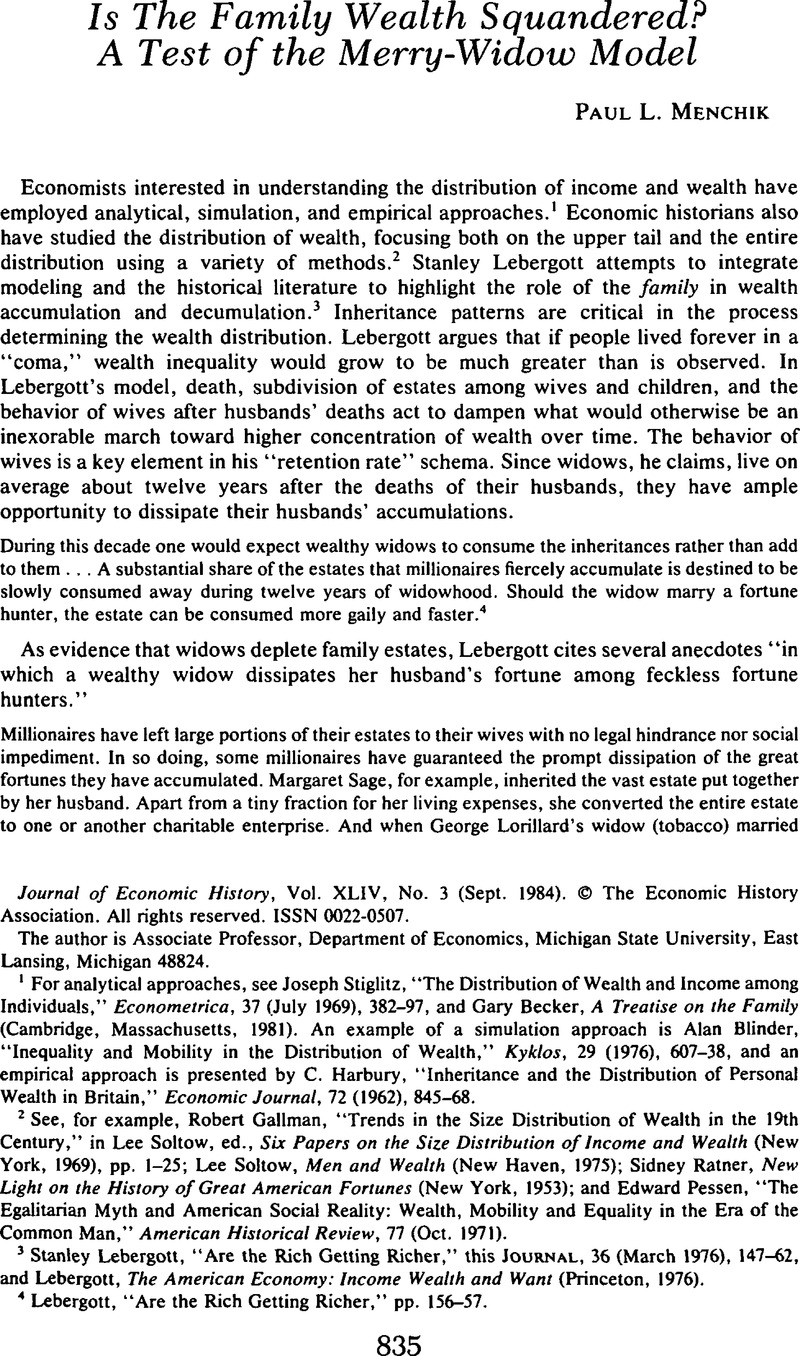Published online by Cambridge University Press: 03 March 2009

2 See, for example, Gallman, Robert, “Trends in the Size Distribution of Wealth in the 19th Century,” in Soltow, Lee, ed., Six Papers on the Size Distribution of Income and Wealth (New York, 1969), pp. 1–25;Google ScholarSoltow, Lee, Men and Wealth (New Haven, 1975);Google ScholarRatner, Sidney, New Light on the History of Great American Fortunes (New York, 1953);Google Scholar and Pessen, Edward, “The Egalitarian Myth and American Social Reality: Wealth, Mobility and Equality in the Era of the Common Man,” American Historical Review, 77 (10 1971).Google Scholar
3 Lebergott, Stanley, “Are the Rich Getting Richer,” this Journal, 36 (03 1976), 147–62,Google Scholar and Lebergott, , The American Economy: Income Wealth and Want (Princeton, 1976).Google Scholar
4 Lebergott, “Are the Rich Getting Richer,” pp. 156–57.Google Scholar
5 p. 156.Google Scholar
6 The earlier studies are Menchik, Paul L., “A Study of Inheritance and Death Taxation: A Microeconomic Approach” (Ph.D. diss., University of Pennsylvania, 1976),Google Scholar and Menchik, , “Intergenerational Transmission of Inequality: An Empirical Study of Wealth Mobility,” Economica, 46 (11 1979), 349–62.CrossRefGoogle Scholar
7 Menchik, “Intergenerational Transmission,” indicates that wealthy parents had wealthy children, although most of the children were not quite as wealthy as their parents.Google Scholar
8 The probate-record data include information about intervivos transfers (gifts), since Connecticut law requires their accounting in Probate Court. Of course, there is no guarantee that gift information is complete, but I added gifts to estate and interspousal transfer totals whenever they appeared in the records.Google Scholar